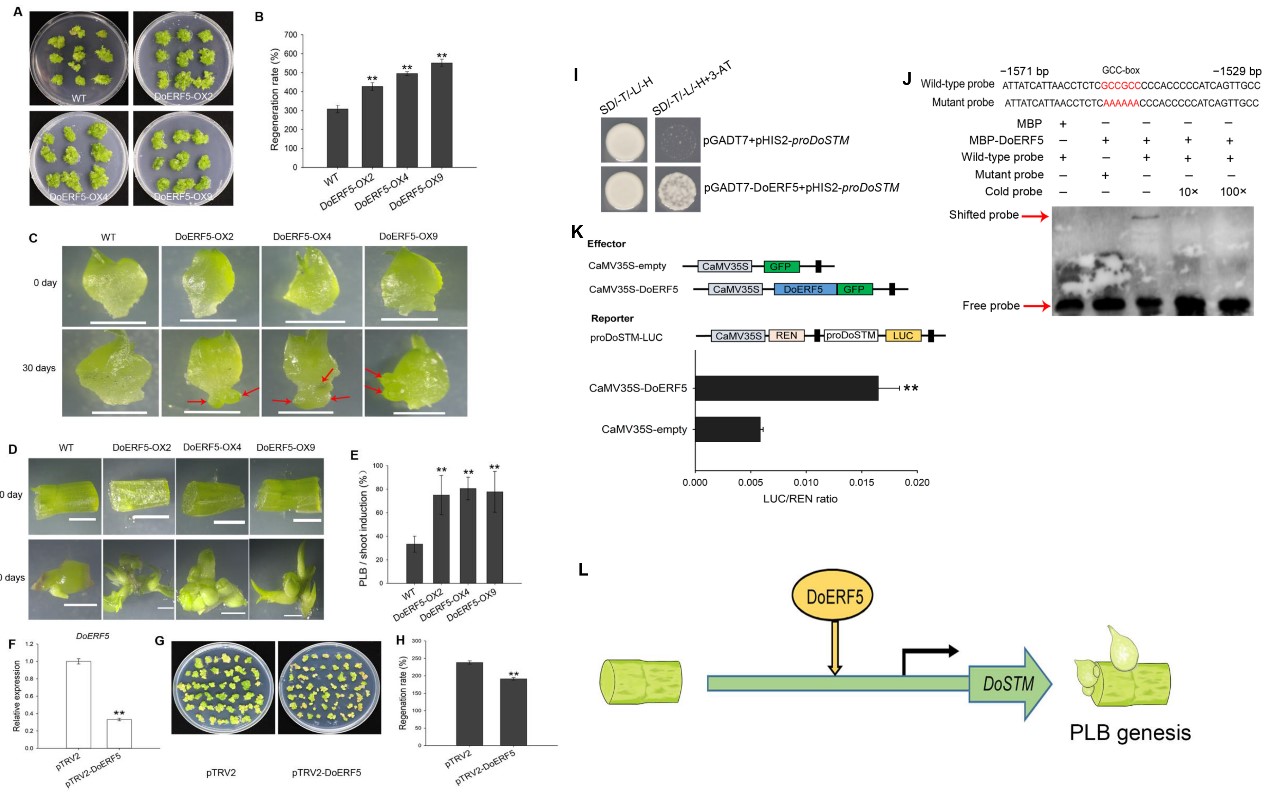The Orchidaceae (commonly known as orchids) is one of the largest and most diverse plant families, one of the hotspots in biological research, and one of the most famous plant groups in global horticultural trade. Most plants undergo embryonic development, forming apical meristems and root meristems. Mature seeds of plants contain plumule, epicotyl, radicle, and endosperm (cotyledons in dicotyledonous plants), which develop into complete plants upon germination. However, orchids have evolved unique seed development processes and specialized germination programs. Their seeds lack endosperm and have an underdeveloped embryo with undifferentiated tissues, lacking plumule, epicotyl and radicle. In the germination process of orchids, a green spherical structure called a protocorm is formed, which is a unique phenomenon in orchids. Under tissue culture conditions, orchid explants can form protocorm-like bodies (PLBs), which exhibit similar transcriptional characteristics to protocorms. PLB regeneration is an important pathway for orchid regeneration and is one of the most advantageous ways for large-scale seedling production of orchids at present. It has broad and important application prospects in the research fields of efficient regeneration of orchids, genetic transformation, production of secondary metabolites, Cell engineering, etc. However, the molecular mechanisms underlying the establishment of this important and unique developmental process in orchids are largely unknown.
Researchers from South China Botanical Garden of the Chinese Academy of Sciences found that the ethylene response factor (ERF) DoERF5 of Dendrobium plays a key role in regulation of PLB regeneration. Overexpression of DoERF5 in Dendrobium greatly enhanced the regeneration of PLBs and up-regulated the expression of DoSTM. DoERF5 can directly bind to the GCC box of DoSTM promoter, and activate the expression of DoSTM, thus regulating the PLB regeneration. Conversely, silencing DoERF5 inhibits the regeneration of PLB and downregulates the expression of DoSTM. This study not only contributes to understanding the molecular mechanisms of PLB development but also provides technical support for the conservation, development, and utilization of orchids.
This study was published in Journal of Integrative Plant Biology entitled ERF5 enhances protocorm-like body regeneration via enhancement of STM expression in Dendrobium orchid. This work was supported by the National Natural Science Foundation of China and the Key-Area Research and Development Program of Guangdong Province. The full paper can be accessed at the following link: https://onlinelibrary.wiley.com/doi/10.1111/jipb.13534

A proposed ERF5-STM regulation model of PLB regeneration in the Dendrobium orchid.



